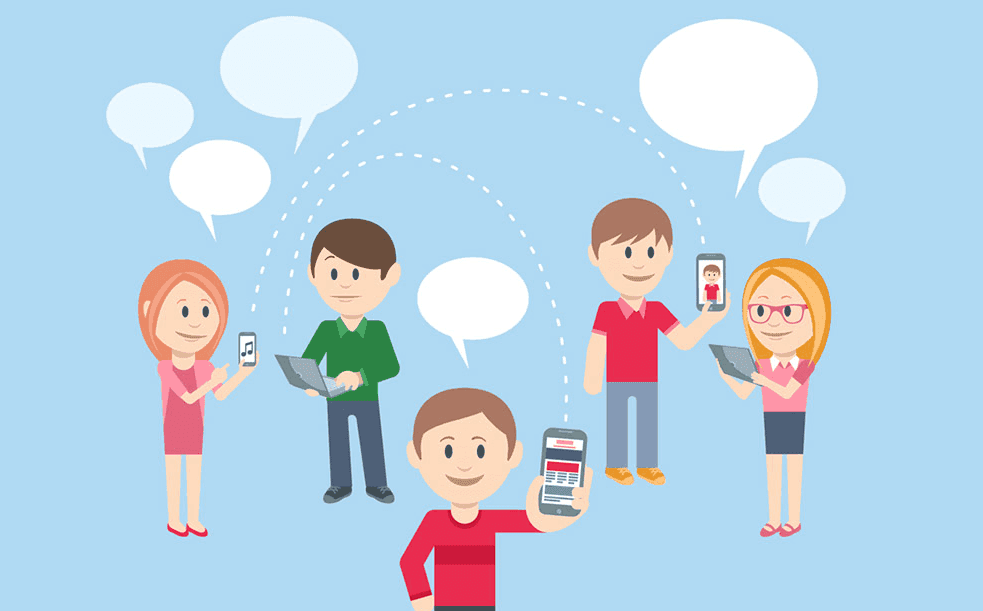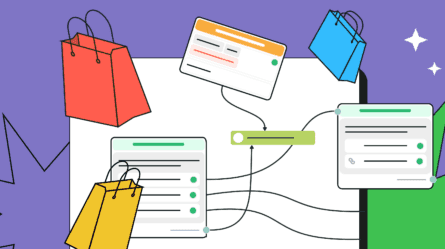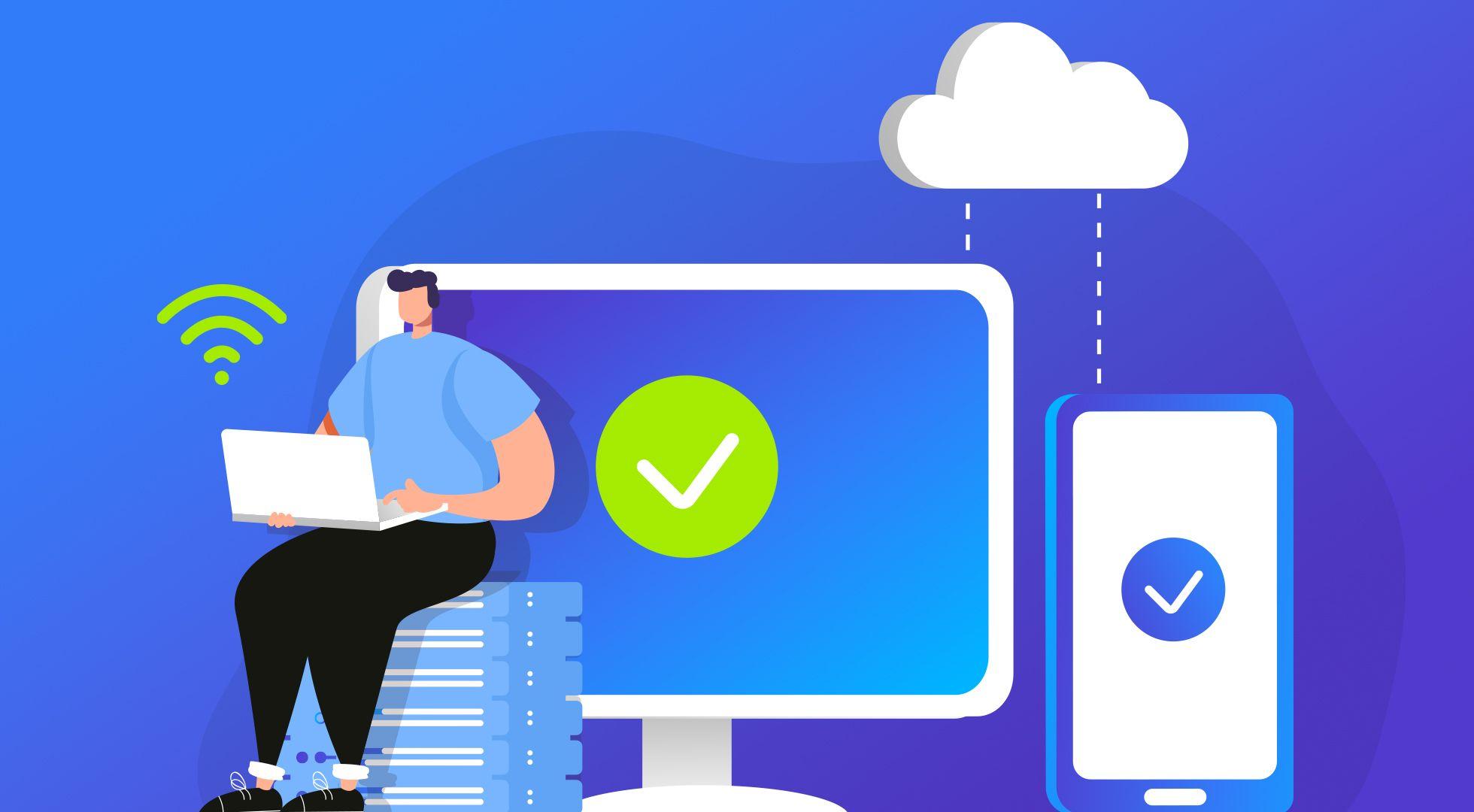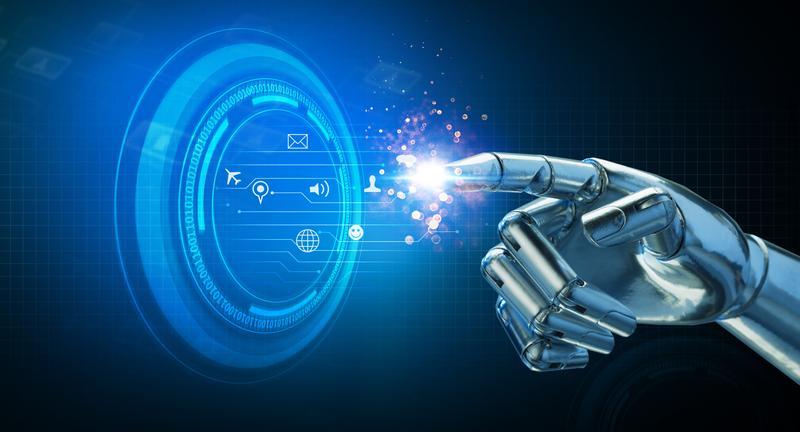双向翻译

How to translate text with the mobile phone camera
Imagine you are on holiday or on a business trip and you come across a sign at the airport or read a restaurant menu in another language.How could you translate the text in front of you? Very easily, using the camera on your mobile phone.The mobile phone, whether Android or iPhone, can be a great help. We always have it with us and thanks to new technologies we have endless possibilities at our fingertips, including text translation with the camera of our mobile phone.Nowadays, there are many ways to translate text, the most common of which are explained below.Translating text with augmented realityThanks to Augmented Reality, you can recognize the environment you are moving through and translate any text detected by your phone’s camera. The translation instantly appears on top of the original text. When you move and return to the original location …. magic, the translation will still be there!It’s very useful when you go to a restaurant and you don’t understand the menu or you have a brochure that interests you but you need to know some details.Text translator with the cameraIf you need to translate text with your mobile phone camera, just frame the text you want to translate on the screen, select the language of the original text and the language you want to translate it into (usually your native language), and when you take a photo, your translation will automatically appear.It’s that easy, and it takes less than 15 seconds. It is a very practical solution if you find yourself in a transport station where the signs are not translated.Translating an object by recognitionFinally, we’ll show you how to translate an object you have in front of you but can’t remember its name, let alone its translation into another language. This method uses recognition technology. When you take a picture with the camera of your mobile phone, it cuts out the area of the object you want to translate and automatically starts the process of recognition and translation into the language you have previously selected.This is a very handy solution if you are at the market and need to know the name of a fruit or vegetable so that you can ask the vendor later.You can use these methodologies to translate text thanks to the augmented reality translation apps and the free camera translator. As you can see, it is very easy to avoid the language barriers that we can encounter on any trip with these translation apps that you can find for both Android and iOS.

AI translation apps: Benefits for your travels?
This article explains the benefits of AI translation apps for travelers, which offer a practical and efficient solution worldwide.Despite the increasing accessibility of international travel, language barriers continue to pose a significant challenge. At LIKE.TG, our goal is to help you explore the world more easilyThe Revolution of AI in TranslationAI technology has revolutionized language translation, providing unprecedented accuracy and contextualization.These applications continuously learn, improving their ability to understand and translate linguistic and cultural nuances with each update.Benefits of AI Translation AppsTravel without language barriersImagine asking for directions, interacting with locals, or even resolving emergencies in a language you don’t speak.AI translation apps make it all possible, removing one of the biggest obstacles for travelers: language.Instant communicationImagine looking at a menu in an Italian restaurant and every dish sounds like a Harry Potter spell. This is where your AI translation app acts as your personal wand.Imagine having a magic button that allows you to instantly understand and speak any language. Well, in the real world, that “wand” fits in your pocket and is called an AI translation app.These apps are like having a personal mini translator with you 24/7, ready to help you order that strange dish on the menu without ending up eating something you can’t even pronounce.Whether you’re trying to unravel the mystery of a Japanese sign or want to know what the hell that road sign in Iceland means, the instant translation offered by some AI apps is your best friend.Cultural learning beyond wordsSome of these apps don’t just translate words for you; they immerse you in a pool of culture without the need for floats. Think of them as a bridge between you and the authentic native experiences that await you in every corner of the world.Suddenly you learn to say “thank you” in Italian so convincingly that even the “nonna” at the restaurant smiles at you.There are tools that not only teach you to speak like a native, but to understand their gestures, their jokes, and even prepare you to be the “King of Karaoke in Korea”.Gain independence and be the boss of your own trip.Need a tour guide? No way! With an AI translation app in your pocket, you become the hero of your own travel odyssey.These digital wonders give you the freedom to control your adventure, allowing you to discover those secret corners of Paris or navigate the back streets of Tokyo without becoming part of the scenery.They are your golden ticket to freedom, giving you the power to explore at your leisure without having to follow the pack like a duck in a line.It’s time to take the reins, blaze your own trail, and collect the epic stories everyone wants to hear.With these apps, independence isn’t just a word; it’s your new way of traveling.Improve your dining experienceHave you ever felt like a detective trying to solve the mystery of a foreign menu? With AI translation apps, the mystery is solved instantly.Imagine pointing your phone at a dish called “Risotto ai Funghi” and discovering that you’re not ordering a strange dessert, but a delicious rice with mushrooms.These apps are your personal Michelin guide, ensuring that every bite is an adventure for your taste buds and not an unwanted surprise.Makes using public transportation easierSay goodbye to the complicated signs and misunderstandings that get you around town.It’s like every traffic sign and schedule speaks your language, giving you a VIP pass to move around the city like a fish in water, ready to explain that the train leaves in 5 minutes, not 50.Suddenly, getting from point A to point B is as easy as ordering a pizza.Improve your personal safetyIn a pinch, these apps become your capeless hero. Whether it’s explaining a shellfish allergy or locating the nearest emergency exit, they help you communicate clearly and avoid those “lost in translation” moments no one wants to experience.Access real-time local information:See that poster about a local event? Yeah, the one that looks interesting but is in a language you don’t understand.With a quick scan, your translation app tells you all about that secret concert or food festival that only the locals go to.Congratulations! You’ve just upgraded your status from tourist to expert traveler.Flexibility and convenienceWant to change your plans and venture to a nearby town recommended by a local you met yesterday at the train station? Of course you can!With the confidence your translation app gives you, you can decide to follow that spontaneous advice and visit a nearby town without worrying about the language. Your trip, your rules.Choosing the best translation app for your travelsWhen choosing a translation app, it is important to consider the variety of languages available, the accuracy of the translation, and the additional features it offers.LIKE.TG apps, for example, stand out for their wide range of supported languages and innovative features that go beyond simple translation, such as real-time speech recognition and built-in language lessons.REMEMBER !!!You can downloadour available appsfor translating and learning languages correctly available for free on googleplay and applestores.Do not hesitate to visit ourLIKE.TG websiteand contact us with any questions or problems you may have, and of course, take a look at any ofour blog articles.

Demystifying AI: Advances in machine translation and its impact on society
We live in a world where globalization has never been higher. Today, effective communication between people speaking different languages is essential. Machine translation, driven by advances in artificial intelligence, has been an invaluable tool for overcoming language barriers.In this article, we will explore how AI integration has revolutionized machine translation and how these advances are positively impacting our society.The emergence of advances in machine translationAdvances in machine translation have been astounding over the past few decades. Thanks to machine learning and natural language processing, among other tech innovations in translation, machine translation systems have significantly improved their accuracy and ability to handle a wide range of languages and contexts.These advances have made machine translation more accessible and reliable than ever before.Facilitating Global Communication Solutions.One of the greatest benefits of advances in machine translation is its ability to facilitate global communication.People can now communicate with speakers of other languages more fluently and effectively thanks to language learning apps, opening up new opportunities for international collaboration and cultural exchange around the world.There are no longer language barriers that prevent people from different cultures from connecting with each other.Transforming education and language learningAdvances in machine translation have also transformed the way we learn and teach languages. With AI-powered translation tools such as LIKE.TG Translate, Google Translator and DeepL, learners can access instant and accurate translations, allowing them to explore new languages and cultures more easily.The real-time translation has democratized access to language learning and made it more accessible to people all over the world.Driving technological innovationMachine learning has not only impacted technological innovation in translation, but also interpersonal communication. Many companies are using real-time translation to develop global products and services, enabling them to reach international audiences more effectively. This has spurred collaboration and creativity in business, opening up new opportunities for business growth and expansion.Ethical challenges and considerationsDespite its benefits, advances in neural machine translation also pose challenges and the ethical implications of AI. For example, the accuracy of translations may vary by language and context, which can lead to misunderstandings and miscommunication.In addition, there is concern that machine translation may eliminate the need to learn other languages, which could have negative implications for linguistic and cultural diversity.ChallengesNeural machine translation has important challenges because they go hand in hand with human interaction and technological development, which, due to advances in artificial intelligence, is constantly evolving to interconnect human beings, breaking down language barriers.The future of machine translationAs technology continues to advance, it is exciting to imagine what the future of machine translation will look like. AI-powered translation tools are expected to become even more accurate and sophisticated, enabling even more fluid and effective communication between people of different languages.This could have a significant impact on our society, and make the world even more connected and accessible to everyone.“The future of real-time translation promises a more seamless and effective communication, connecting people around the world in a more accessible way than ever before.”The transformative impact of machine translationAdvances in machine translation have changed our society: they have facilitated global communication, transformed education and the way we learn languages, driven technological innovation, presented challenges and raised ethical concerns.As we continue to move forward in this area, it is important to consider both the benefits and challenges that AI-powered translation tools can bring, and to work together to make the most of this incredible technology.If you are interested in any specifics, or would like a full article on it, feel free to let us know in the comments..REMEMBER !!!You can download our available apps to translate and learn languages correctly, available for free in googleplay and applestore.Don’t hesitate to visit our LIKE.TG website and contact us with any questions or problems you may have, and of course, take a look at any of our blog articles.

Uniting cultures: The love story between Douha Laribi and Cañita through translation technology
In an increasingly connected world, the language barrier can be a significant obstacle to communication and understanding between people from different cultures and regions. However, with the advancement of translation apps and technology, such as artificial intelligence (AI) translators, we are granted the opportunity of overcoming this barrier more efficiently than ever.In this article, we will explore the impact of AI translators on global communication, focusing on log-distance love, cross-cultural romance and real testimonies from users such as influential TikToker Douha Laribi and her experience in overcoming language barriers with Peruvian TikToker Alexis José Cañañaupa, popularly known as Cañita.Breaking barriers with the help of technologyDouha Laribi and Cañita‘s story is a vivid example of how technology can break down language barriers and open new opportunities for communication and human connection. On a platform like TikTok, where content can transcend borders and reach audiences around the world, the ability to communicate in different languages becomes crucial to expanding reach and influence.The Douha Laribi experience: Overcoming language limitationsFor Douha Laribi, a TikTok star of Arab descent, the language barrier had always been a challenge in her social media career. However, everything changed when he met Cañita in a TikTok battle and they fell in love. Even though they spoke different languages, AI-powered translation apps became their ally to overcome this barrier and deepen their connection.Forging a digital path: Cañita’s rise in the world of social mediaCañita, a prominent Peruvian digital influencer, began his journey on TikTok by sharing videos of his interactions on Omegle. Despite facing the challenge of having his account suspended twice, he persevered and eventually managed to establish himself as a recognized figure on the platform.His dedication and talent led him to reach a significant milestone in April of this year (2024), when he was invited to compete in one of TikTok’s most prestigious leagues. With his creativity and charisma, he captivated the audience and was crowned the winner, receiving an impressive prize of one million dollars in donations.The chance meeting with the influencer Douha, from Dubai, added a new chapter to her growing international fame. His collaboration and connection on the platform further contributed to his reputation as one of the most prominent and respected influencers in the digital world.The role of AI translators in global communicationAI translators, such as Voice Translator, play a crucial role in global communication by enabling instant voice translation into multiple languages. These tools not only facilitate communication between people of different linguistic backgrounds, but also promote cultural understanding and the exchange of ideas in an increasingly interconnected world.The future of global communication: Challenges and opportunitiesAs machine translation technology continues to evolve, we face new challenges and opportunities in the realm of global communication. While AI translators have proven effective in overcoming language barriers, there is still work to be done in terms of accuracy and adaptability to different contexts and dialects.In conclusion, AI translators represent a step forward in eliminating the language barrier and promoting global communication tools. With testimonies like that of Douha Laribi and Cañita, we can see how these tools are transforming the way we relate and connect in a diverse and multicultural world. However, it is important to remember that technology is just a tool; True human connection arises when we open ourselves to understanding and appreciating each other’s linguistic and cultural differences.

Artificial intelligence (AI) in language teaching: Future perspectives and challenges
In a world where educational technology is advancing by leaps and bounds, it is no surprise that artificial intelligence is revolutionizing the way we learn languages.The combination of machine learning in education and AI in language teaching has opened up a range of exciting possibilities and, at the same time, poses challenges that we must face to make the most of this innovation.What is Artificial Intelligence in Language Teaching?Artificial intelligence (AI) in language teaching refers to the use of algorithms and computer systems to facilitate the process of learning a new language.From mobile apps to online platforms, AI has been integrated into a variety of tools designed to help students improve their language skills efficiently and effectively.Advances in AI and its challenges in language learningArtificial intelligence (AI) is radically transforming the way we learn languages. With the emergence of AI-powered apps and platforms, students have access to innovative tools that personalize learning to their individual needs.These tools use machine learning algorithms to analyze student progress and deliver tailored content, from grammar exercises to conversation practice.Additionally, AI-powered translation has significantly improved in accuracy and speed. Apps like LIKE.TG Translate allow users to instantly translate between multiple languages with just a few clicks, making multilingual communication easier.Artificial Intelligence offers unprecedented potential to improve the language learning process, providing students with personalized and efficient tools.Positive Perspectives of AI in Language TeachingOne of the main advantages of AI in language teaching is its ability to personalize learning. Through data analysis and machine learning, AI systems can adapt digital learning platforms, content and activities based on the needs and preferences of each student.This allows for a more individualized and effective approach to improving language skills.In addition, AI has also enabled the development of more accurate and faster real-time translation tools. With apps like LIKE.TG Translate, users can access instant translations in multiple languages with just a few clicks.This facilitates communication in multilingual environments and expands opportunities for interaction and learning.AI in language teaching opens the doors to global communication without barriersChallenges and Future ChallengesDespite advances in AI applied to language teaching, there are still important challenges that we must overcome. One of the main challenges is to guarantee the quality and accuracy of the content generated by AI.While AI systems can be effective in providing feedback and practice exercises, there are still areas where human intervention is necessary to correct errors and provide high-quality teaching.Another important challenge is ensuring that AI in language teaching is accessible to everyone. As we move towards an increasingly digitalized future, it is crucial to ensure that all people, regardless of their geographic location or socioeconomic status, have access to AI language learning apps.This will require investment in technological infrastructure and digital literacy programs around the world.How Long Is It Possible to Learn a Language with Artificial Intelligence?With the help of artificial intelligence (AI), learning a new language can be more efficient than ever.Although the time required to master a language varies depending on various factors, such as the complexity of the language, the level of dedication of the learner, and the quality of the AI tools used, many people have managed to acquire significant language skills in a relatively short period of time.Thanks to AI applications and platforms designed specifically for language learning, users can benefit from a personalized approach tailored to their individual needs.These tools use machine learning algorithms to identify areas for improvement and provide relevant content, speeding up the learning process.On average, some people have reported significant gains in their language proficiency in just a few months of consistent use of AI tools.However, it is important to keep in mind that learning a language is an ongoing process and that completing mastery can take years of constant practice and exposure to the language in real-world contexts.Ultimately, the time needed to learn a language with AI depends largely on the commitment and dedication of the student.“The journey to mastering a language with AI begins with small daily steps, but constant dedication is the key to achieving the desired fluency.”In conclusion, the integration of technology in education and artificial intelligence in language teaching offers exciting opportunities to improve the learning process and promote intercultural global communication.However, it also poses challenges that we must proactively address to ensure that everyone can benefit from this innovation in education.With a collaborative approach and a continued commitment to educational excellence, we can fully realize the potential of AI in language teaching and prepare for a multilingual and globalized future.Visit our website for more information and begin your journey towards mastering languages with the best and most advanced technology.

How new algorithms improve translation accuracy
In today’s digital age, global communication has become an imperative. With the expansion of international trade, tourism and online connectivity, the ability to communicate effectively in different languages has become essential.However, language translation has long been a challenge due to the complexity and subtleties of different languages and cultures. It’s not easy for a machine to take into account the cultural context in translation.Fortunately, advances in algorithm technology have revolutionized the way language translation is performed.These new algorithms are significantly improving translation accuracy and efficiency, enabling smoother and more effective communication in an increasingly interconnected world.The role of algorithms in language translationAlgorithms are sets of mathematical instructions that guide data processing on a computer. In the context of language translation, algorithms play a crucial role in the analysis and interpretation of text in different languages.These algorithms use natural language processing (NLP) techniques to understand the meaning behind words and phrases, as well as the grammatical and semantic rules of each language.New algorithms are improving translation accuracyOne of the main challenges in language translation is capturing the precise meaning of a sentence or phrase in the target language. Older machine translation approaches often produced inaccurate or confusing results, making it difficult for people speaking different languages to communicate effectively.However, new algorithms are changing this by improving translation accuracy.These algorithms use advanced machine learning techniques and neural networks to train translation models that are able to more accurately capture the meaning and intent behind the text.Adaptability to contexts and culturesAnother crucial aspect of language translation is the ability to adapt to different contexts and cultures. Languages vary not only in terms of vocabulary and grammar, but also in terms of cultural norms and communication conventions.Older systems often struggled to capture the subtleties of cultural context in translation, leading to inaccurate or culturally insensitive translations.New algorithms are addressing this challenge by incorporating a deeper understanding of culture and context into the translation process.These algorithms can analyze the surrounding context of a text, as well as the culture and communication conventions of the source and target language, to produce more accurate and culturally appropriate translations.Practical applications of accurate language translationImproving the accuracy of language translation has a wide range of practical applications in a variety of fields. In business, the ability to communicate effectively with international clients and partners can open up new business opportunities and increase competitiveness in the global marketplace.In education, accurate translation of educational resources can facilitate learning for students from different linguistic backgrounds, promoting inclusion and equal access to education.And in the medical and legal fields, accurate translation of documents and conversations can be vital to ensure fair and equitable medical and legal care for people who speak different languages.Evolution of algorithmsThe evolution of algorithms has been fundamental to the way we learn languages. From the early days of machine translators to the sophisticated language learning applications available today, algorithms have played a crucial role in not only improving translation accuracy and efficiency, but also in how we learn languages nowadays.Algorithms have significantly advanced in their ability to understand the context and subtleties of different languages, leading to more accurate and natural translations. In addition, they have enabled the development of machine learning and natural language processing techniques that personalize the language learning experience for each user.“The evolution of algorithms has opened up new frontiers in language learning, making it more accessible and effective for everyone.”Thanks to these advances, we now have access to a wide range of tools and resources that make learning a new language more accessible and effective than ever before.From mobile apps that offer interactive lessons to online platforms that facilitate conversational practice with native speakers, algorithms have expanded language learning possibilities for people of all ages and skill levels.Breakthroughs for tomorrowThe future of translation looks promising thanks to the significant advances in language translation accuracy driven by the new algorithms. These advances are paving the way for more effective and fluid communication in an increasingly diverse and globalized world.With the continued evolution of algorithm technology, we can expect language translation to continue to improve in accuracy and efficiency, overcoming old language barriers and opening new frontiers in global communication.REMEMBER!!!If you liked this content don’t hesitate to let us know in the comments, and we will create more such content to help you.You can download ouravailable appstotranslate and learn languagescorrectly, availablefor freein googleplay and applestore.Don’t hesitate to visit ourLIKE.TG websiteand contact us with any questions or problems you may have, and of course, take a look at any of ourblog articles.







































